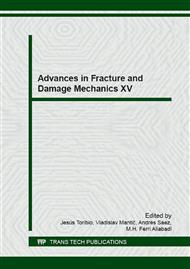p.1
p.5
p.10
p.14
p.18
p.22
p.26
p.30
The Role of Prior Fabrication and in Service Thermal Ageing on the Creep Life of AISI Type 316 Stainless Steel Components
Abstract:
A significant factor that influences the creep life of AISI Type 316H austenitic stainless steel components such as headers, and tubes is the initial microstructure. These components typically have a comparable specified composition but different thermo-mechanical fabrication histories. The variations in composition within the nominal range result in initial microstructures which become increasingly divergent during ageing. In this paper we explore effect of these contributions on the long term service aged microstructure and discuss the resulting impact on the overall creep life of these components. The microstructure of specific regions has been characterised with a range of techniques, including high resolution transmission electron microscopy imaging and chemical analyses undertaken using a JEOL ARM instrument operating at 200 KeV fitted with an energy dispersive spectrometer. This provides a unique identification of the service aged precipitates and the distribution of alloying and impurity elements. The results are discussed with respect to the initiation of creep cavities and the associated creep damage accumulation in the context of lifetime assessment of these AISI Type 316H austenitic stainless steel boiler components.
Info:
Periodical:
Pages:
1-4
Citation:
Online since:
September 2016
Price:
Сopyright:
© 2016 Trans Tech Publications Ltd. All Rights Reserved
Share:
Citation:


